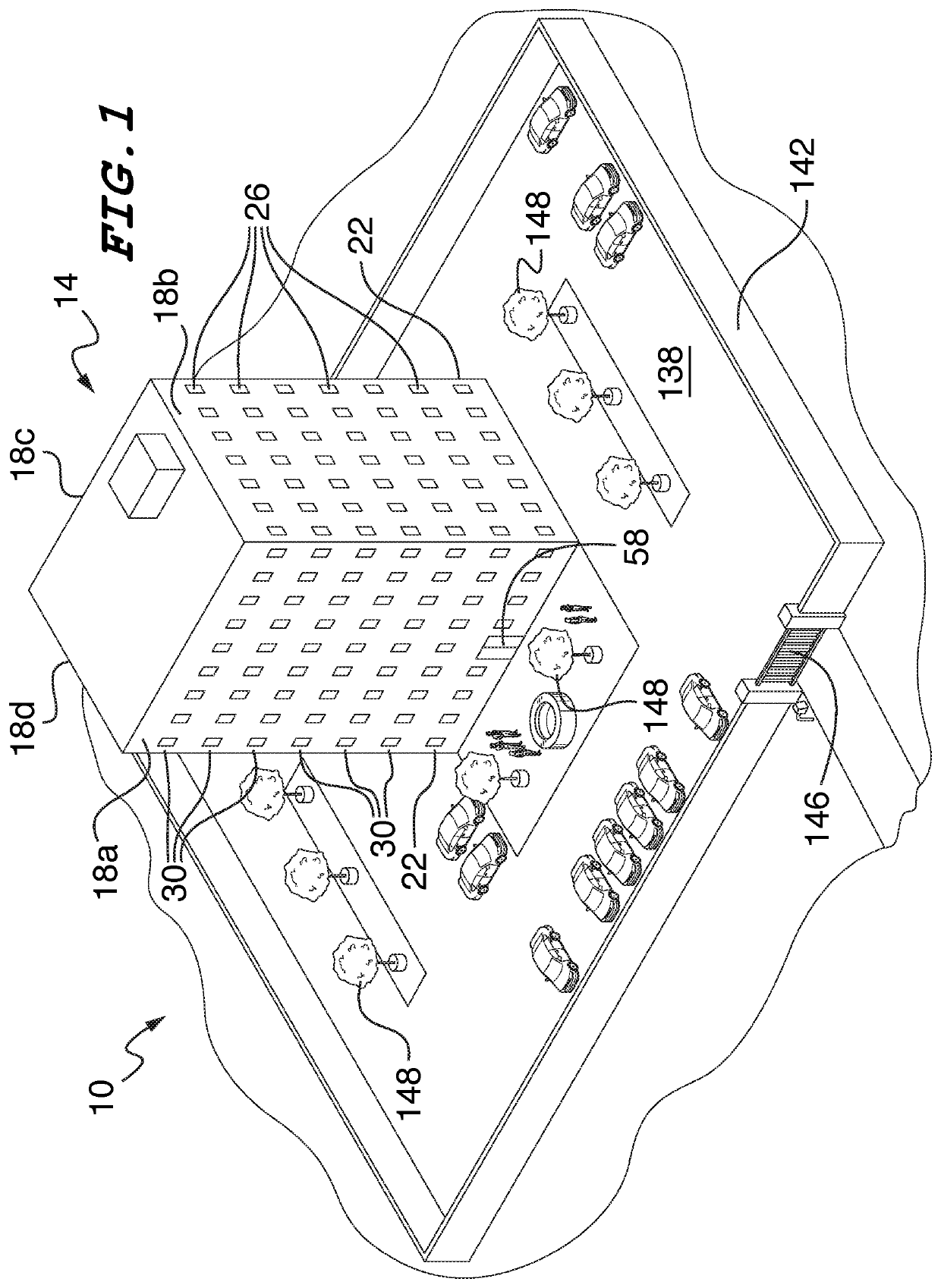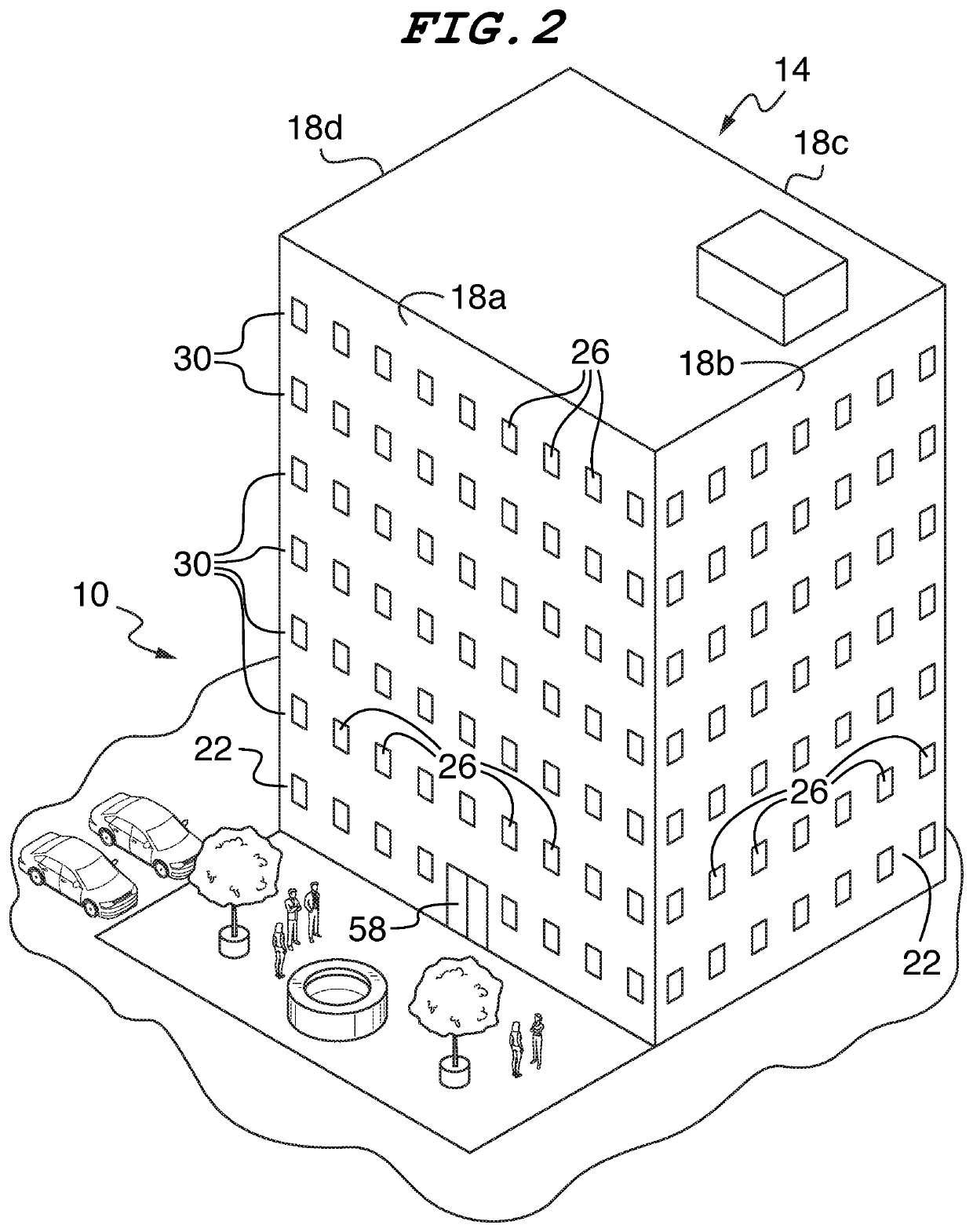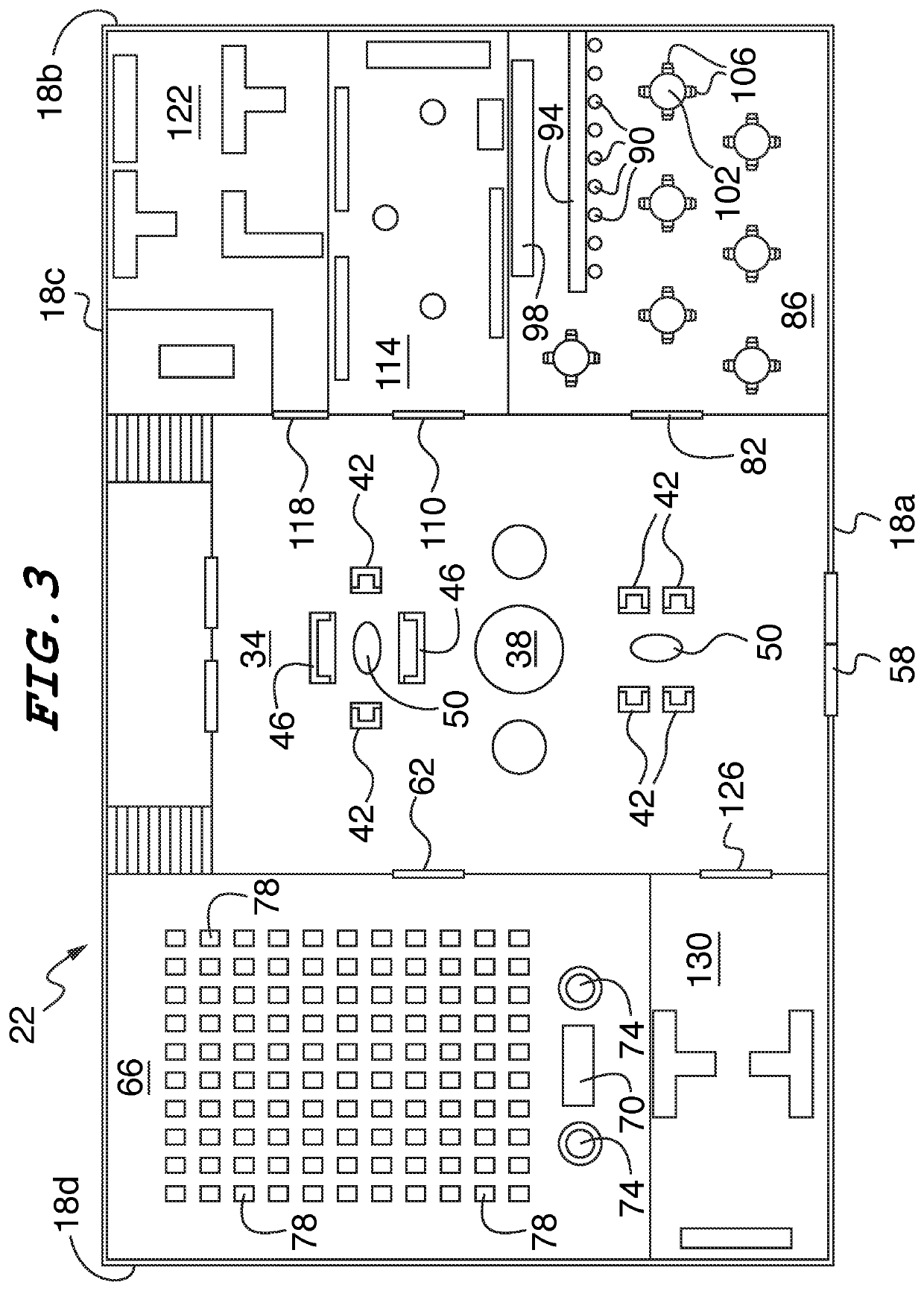Interment system including desiccation vessel for securely and portably retaining decedent remains, and building structure for housing same
a technology for storing and storing decedent remains, which is applied in the field of expandable, memorial rooms or suites, clusters of rooms, dedicated floors and buildings, can solve the problems of lack of meaning in traditional cemetery or funeral services, lack of structure and formality of traditional funeral services, and inability to provide family with comfort and closure. it can reduce the probability of excess pressur
- Summary
- Abstract
- Description
- Claims
- Application Information
AI Technical Summary
Benefits of technology
Problems solved by technology
Method used
Image
Examples
embodiment 134
[0078]Referring now to FIGS. 12 through 15, there is shown therein an alternative embodiment of the memorial suite 400 of the present invention. Similar to the memorial suite embodiment 134 discussed above, this alternative embodiment suite 400 may be located on the ground floor or any upper floor of the multi-floor building structure as depicted in FIGS. 1 and 2. The memorial suite 400 is arranged to provide comfort, revive memories or impart information about decedents, and identify things with which decedents were associated. The memorial suite 400 may resemble the familiar surrounds of a residential home by including a living room, a kitchen, and / or bathroom. Or, there may be shared bathroom facilities on each floor of the facility 10 where multiple memorial suites 400 exist on a common floor. The memorial suite 400 may be a single room or several connected rooms, or it could be an entire floor of a building, or an entire building. The memorial suite 400 may be utilized as a fam...
embodiment 400
[0084]The storage vaults 412a, 412b may be positioned in any configuration within the large continuous space 404. As shown in this embodiment 400, each storage vault 412a and 412b extends the entire width “W” of the space 404. However, this detail is merely exemplary. Alternatively, one or both storage vaults 412a and 412b may extend from wall 408 only a portion of the width “W”. Alternatively, one or both storage vaults 412a and 412b could extend only a portion of the width “W” and be centered therealong. The storage vaults 412a and 412b are shown as being located at positions within the space 404 to define two living areas indicated at 444a and 444b for access by family members and visitors 411 during visits to the memorial suite 400. As best shown in FIG. 14, the storage vaults 412a and 412b are oriented within the memorial suite 400 such that the tribute wall 428 of the respective storage vaults 412a and 412b face outwardly and onto the living areas 444a, 444b, while the access ...
PUM
| Property | Measurement | Unit |
|---|---|---|
| distance | aaaaa | aaaaa |
| area | aaaaa | aaaaa |
| temperature | aaaaa | aaaaa |
Abstract
Description
Claims
Application Information
 Login to View More
Login to View More - R&D
- Intellectual Property
- Life Sciences
- Materials
- Tech Scout
- Unparalleled Data Quality
- Higher Quality Content
- 60% Fewer Hallucinations
Browse by: Latest US Patents, China's latest patents, Technical Efficacy Thesaurus, Application Domain, Technology Topic, Popular Technical Reports.
© 2025 PatSnap. All rights reserved.Legal|Privacy policy|Modern Slavery Act Transparency Statement|Sitemap|About US| Contact US: help@patsnap.com



